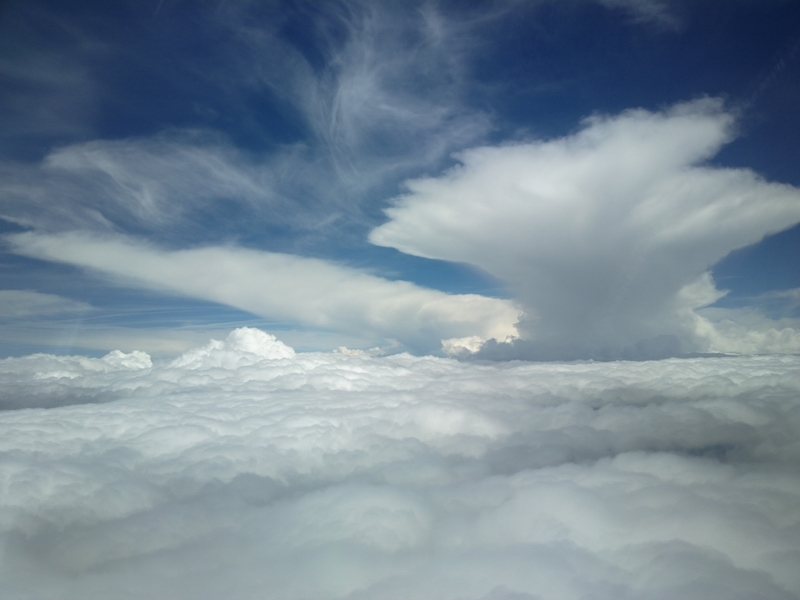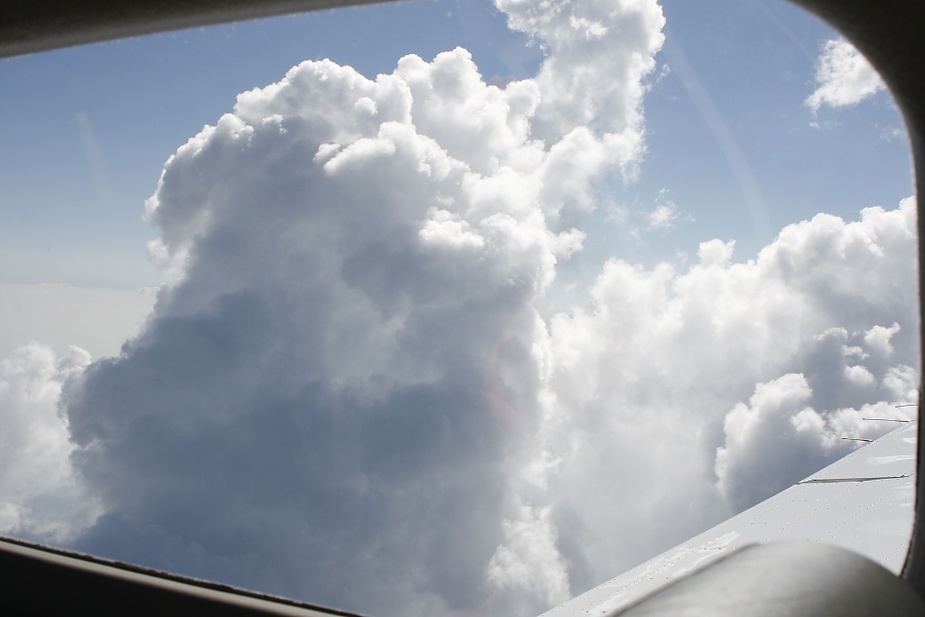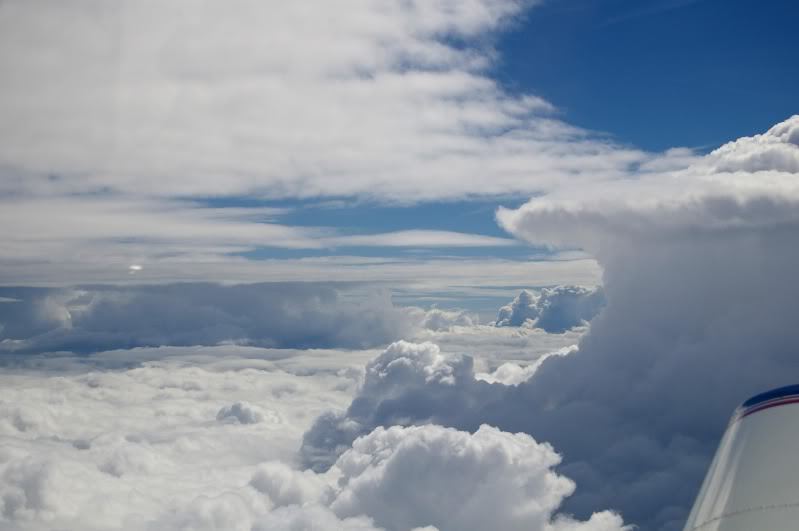I wonder what your insurance would think about a hail damage claim that happened inside a TCU?
Well you wouldn't upload it to Youtube until you landed and checked for damage 
...and then tell the insurance he had parked the aircraft vertically on its tail, to explain why there is hail damage to the leading edges and not so much to the roof and top of the wings...
Really bad hail does not necessarily fall out of the CB, BTW, but can fall next to it in otherwise clear air when it gets blown out of the top. Anyway, that would be my story and I would stick to it ;-) although that sort of hail would probably write off a light aircraft, if I survive to tell the tale.
Looking at that video, I have an interesting weather / physics question about cumuliform clouds that has been bugging me for years.
In a convective cloud with rising air, the air temperature should be higher than in the surrounding air, otherwise it would not keep rising.
Meanwhile, in real life, temperature in cloud tends to be lower than outside
Why? And by how much can I expect this to be? And how much has that been taken into account in freezing level forecasts?
In a convective cloud with rising air, the air temperature should be higher than in the surrounding air, otherwise it would not keep rising.
I believe this is due to the vertical movements inside convective clouds. Cold air falls down and takes moisture with it, gets in an upwards current near the bottom and catapulted up etc.
I am sure in-flight hail damage would be covered by insurance.
You can get hail in VMC, obviously...
I find, consistently, a cloud will be 3C colder than just outside it. But that is just for stratus, and little stuff. I am not going to pop into one of these to collect data to post on EuroGA

Whoops - you can get lat/long for that pic from the EXIF data 
Maneuvering speed works well in turbulence, but for ultimate protection fly slower. Flying at Va and hitting a gust going against the aeroplane from below, the airspeed will increase and allow g-loads to exceed design limits. Stalls are not to avoid at all costs, in fact momentary stalls may ultimately protect the wing from overload. Looking at en-route loss-of-control, for every stall/spin related occurence there is about 20 high-speed / high load occurrences (graveyard spiral). This is probably somewhat type-specific. I once read an article that recommended an airspeed two thirds of the way from stall to Va, for these reasons, for best turbulence protection. For a DA-40 that would be around 85-90 KIAS.
 looks more dramatic than it was. taken from FL 100, the only cloud above FL85 in 100 km radius
looks more dramatic than it was. taken from FL 100, the only cloud above FL85 in 100 km radius
...for every stall/spin related occurence there is about 20 high-speed / high load occurrences (graveyard spiral).
Yes, but these graveyard spirals are usually consequences of a stall or general loss of control (e.g. by a non instrument trained pilot). Structural breakups due to excessive g-loads in turbulent level flight or due to overspeed are rare to nonexistant. I have once had so much ice on a Piper Seminole (look at the video above to see how fast that can go!) that it would stall at 100kt, normal clean stall is around 60kt! Flying below Va does not give much protection against a stall in such conditions. And exploring the stall/spin characteristics of an iced-up aeroplane on instruments alone is not something I ever expect to do...
Thank you Cheshunt. By watching your video I got a good impression on how it is to fly through TCU. I think it is just not my cup of tea... ;-)
I started IFR touring earlier this year, basically using the "simple method" Peter describes in his trip reports. I have oxygen and plan my trips in VMC on top. I made very little IMC time so far. Dispatch rate is quite good.
Cobalt posted an interesting point:
I'm sure the best way to avoid the embedded TCU would have been to turn on the ADF, and fly at right angles to the needle...
Now how does that work? Should I tune in a high or a low frequency?
BTW: This were the actual conditions of my flight last wednesday evening:

Not convective at all if you ask me...
Does that little bit of white stuff qualify as a TCU, Michal?
I would say these are TCUs (pic taken at FL140 over the Alps)

At the right side is a CB. This can you see at the strome scope and radar. A TCU ist "invisibel" to both, thats why a get nervous while flying IMC and TCU are forcast!